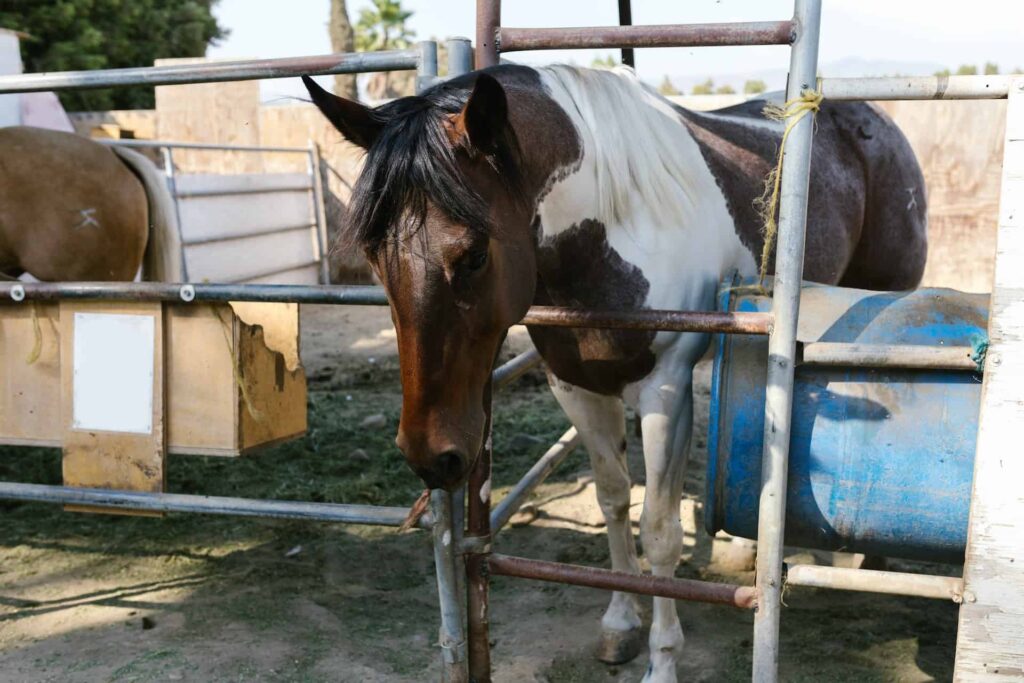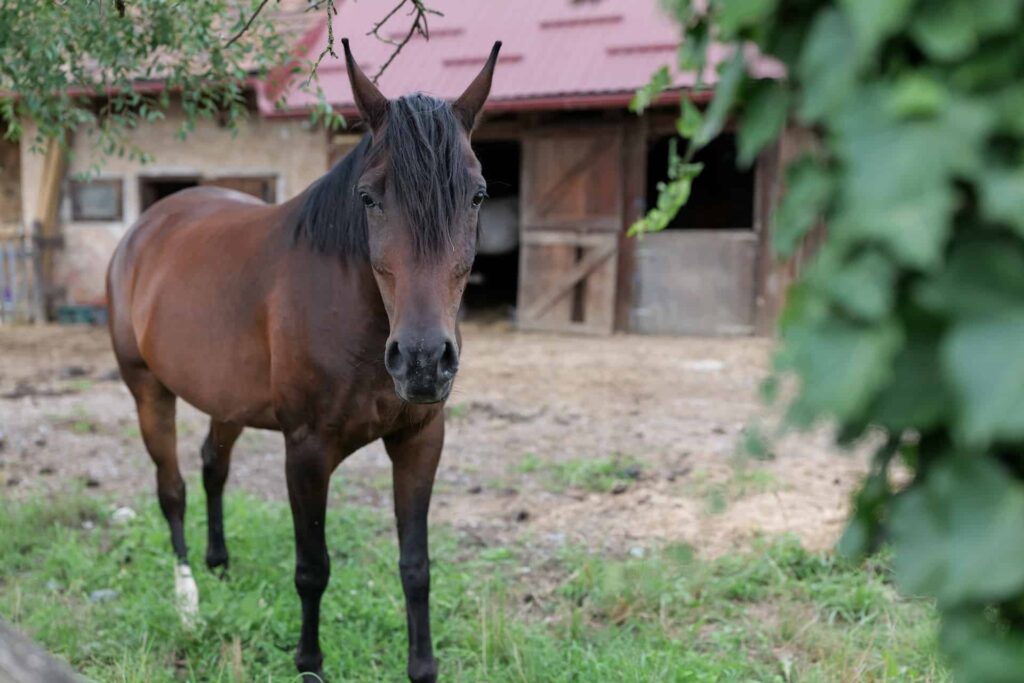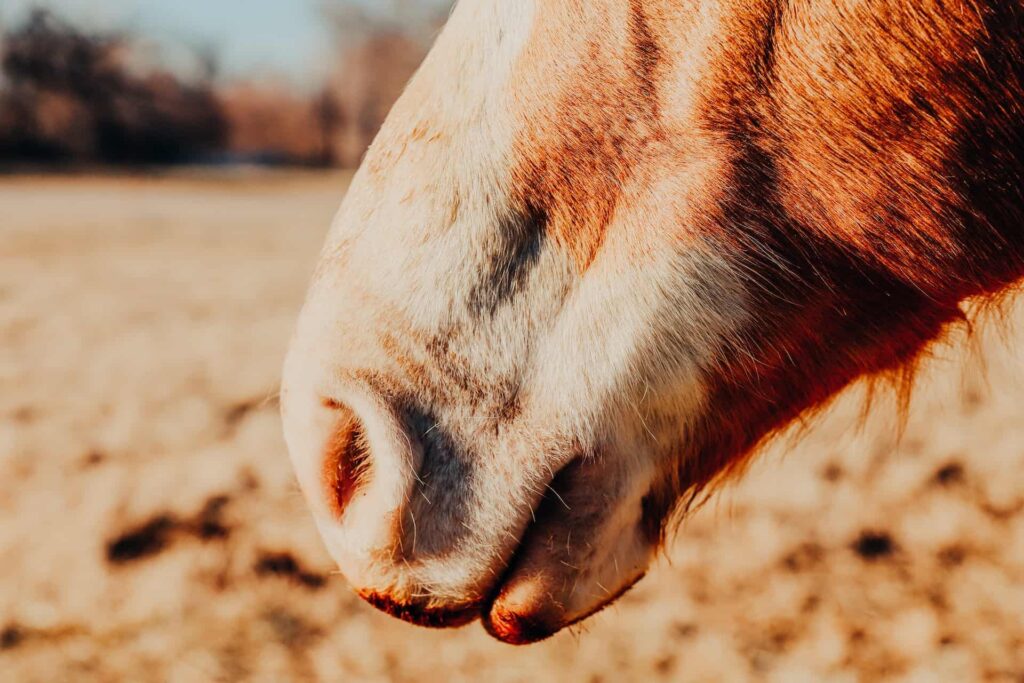In the animal kingdom, understanding the anatomy of different species can shed light on their unique characteristics and functionalities. Horses, being mammals, have mammary glands responsible for producing milk to nourish their offspring. So if you’re asking “do horses have udders?” Yes, they do. It’s important to note that the structure of these glands differs from those in other mammals.
While the term “udders” is generally used to describe the milk-producing glands in animals like cows and goats, horses do not have udders as such. Instead, they have mammary glands known as teats, which are anatomically distinct from udders. These teats serve a similar purpose in providing nutrition and sustenance to foals during the early stages of their development.
Key Takeaways
- Horses have mammary glands called teats rather than udders.
- Teats provide nutrition to newborn foals.
- Horse anatomy differs from other mammals, affecting milk production and lactation processes.
Understanding Horse Anatomy
Horses are some of the most majestic creatures in the animal kingdom, with a unique anatomy that reflects their strength, agility, and adaptability. It’s important to have a clear understanding of horse anatomy when considering their udders.
In general, horses do have udders. However, udders are primarily found in female horses, also known as mares. The udders in mares consist of one pair of mammae with two teats, which serve as milk-producing organs to feed their foals. Male horses, or stallions, do not possess udders, as they do not produce milk.
As organisms with varying reproductive and physiological systems, male and female horses exhibit distinct anatomical differences in the region around their hind legs and groins. Mares have a more developed area in this region, which includes their udders. Conversely, stallions have a more muscular and less fat accumulation, corresponding with their reproductive functions.
The location and structure of a mare’s reproductive system play a critical role in its lifecycle, particularly during pregnancy and nursing. The mare’s udder fills with milk shortly before birth, getting ready for nursing the newborn foal. This phenomenon often serves as an indicator of impending foaling.
Understanding the anatomy of horses extends beyond just their udders but also involves knowing about their hind legs, groin, and other characteristics that are unique to each sex. Continue learning about their anatomy to better learn horse care for these majestic creatures.
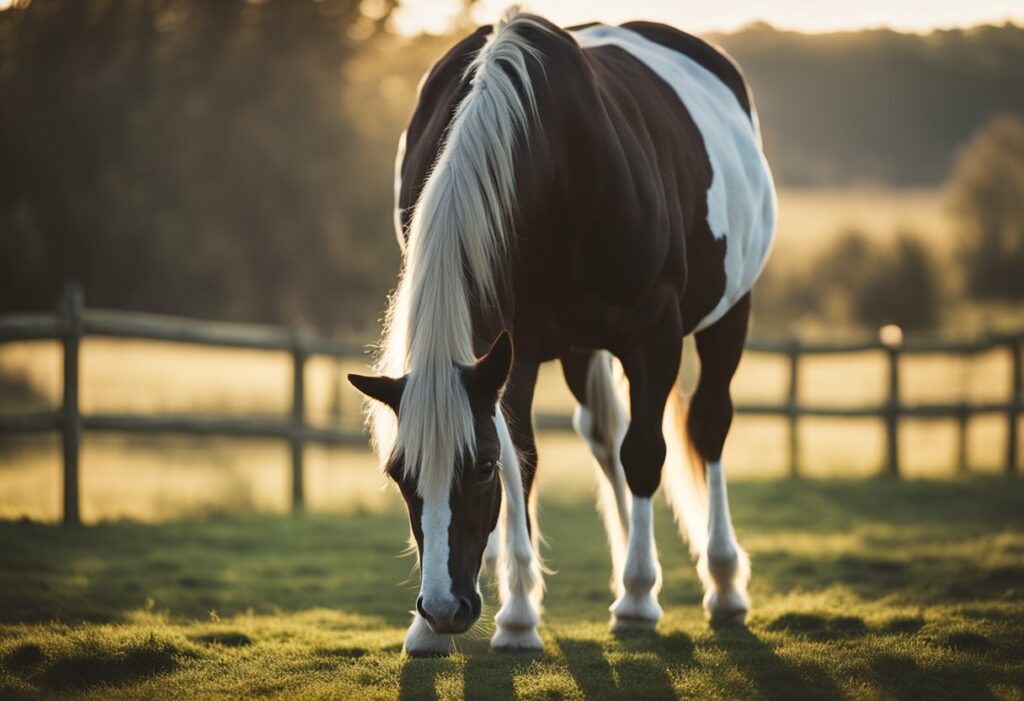
Difference between Udders and Teats
Definitions
Udders are the large, bag-like external structures that contain the mammary glands in some animals, such as cows and goats. These glands produce milk, which serves as the key nutrient for their offspring. Udders are typically comprised of multiple compartments called quarters, where milk is stored.
Teats, on the other hand, are the protruding, cylindrical structures located on the udders. They serve as the attachment points for the offspring to suckle and obtain milk. Teats generally have a small opening at the end, known as the nipple, through which milk is dispensed.
Comparative Analysis
While both udders and teats play roles in the production and delivery of milk, there are some key differences between them:
- Structure: Udders are larger, more complex structures containing the mammary glands, while teats are smaller, simpler protrusions that act as the interface between the udders and the offspring.
- Function: Udders primarily function in milk storage and production by housing the mammary glands, whereas teats facilitate the milk transfer to the offspring through suckling.
- Number: The number of udders and teats can vary between different animal species. For example, cows typically have one udder with four teats, while goats have one udder with two teats.
- Health: Both udders and teats are susceptible to health issues, such as mastitis or injury, which can affect milk production. Proper hygiene and regular horse health checks are necessary to maintain their optimal function.
In the case of horses, they do not have udders like cows. Instead, female horses or mares possess two mammary glands with accompanying teats. While these structures may bear some similarities to udders and teats in other animals, they are not identical in terms of structure, function, and health considerations.
Lactation in Horses
Milking Process
The process of milking mares to obtain mare milk involves the frequent emptying of the horse udders as the foal nurses throughout the lactation period. The udder capacity in mares is relatively small compared to other milk-producing species like cows. The size of the udder can change during lactation and is influenced by factors like mastitis and fibrosis.
Colostrum Importance
Colostrum is the first milk produced by mares soon after giving birth (foaling). This substance provides the newborn foal with important nutrients, antibodies, and hormones. These components are critical for the foal’s immune system and health. Mares that are pregnant or lactating require special attention for their health and milk production. It’s important to manage lactating mares to maintain the welfare of both the mare and the foal.
Horse Milk Production
Milk production in mares is a complex process regulated by hormones and the presence of the foal. Lactation in horses can be affected by various factors such as diet, environment, hormones, and health conditions like Cushing’s disease. Optimal milk production is enabled by frequent emptying of the udder in sync with foal nursing times. Milking a horse needs to be conducted with care and sanitation to avoid complications.
The lactation process in horses, including their udder capacity and milk production, plays a role in the health and well-being of both mares and their foals. Proper management, nutrition, and care are key to maintaining the ideal conditions for successful lactation in mares.
Health Concerns
Inflammation and Mastitis
Mastitis is a common health concern in horses, characterized by inflammation and infection in the mammary glands. This condition can present itself in various forms, ranging from mild to severe. When affected, the mammary glands become swollen, tender, and warm to the touch. Mastitis can be caused by bacterial infections, trauma, or hormonal imbalances. If left untreated, this condition can lead to permanent damage and decreased functionality of the mammary glands.
Tumors and Distension
Tumors in the mammary glands are another health concern in horses. While they can be benign or malignant, their presence can cause distension or enlargement of the affected area. This physical change can impact the health and comfort of the horse, potentially leading to additional complications. It is crucial for horse owners and caretakers to monitor their animals for any signs of tumors or distension and consult a veterinarian if any abnormalities are found.
Potential Treatment Methods
Treating health concerns related to horse mammary glands typically begins with identifying the root cause. For cases of mastitis, the primary treatment option is often the administration of antibiotics, which target the underlying bacterial infection. In tandem with antibiotics, anti-inflammatory medication can help alleviate the pain and swelling associated with the condition.
In instances where tumors are present, a thorough evaluation by a veterinarian is required. Depending on the type and severity of the tumor, treatment options may include surgical removal, radiation therapy, or chemotherapy.
Preventative measures such as regular check-ups, proper hygiene practices, and monitoring of hormonal imbalances play a necessary role in maintaining udder health in horses. These strategies contribute to early detection and intervention, ultimately ensuring the well-being of the animal.
Foal Nursing and Development
The Role of Milk in Foal Development
Milk plays aids in the growth and development of foals. During the early stages of life, foals rely primarily on their mother’s milk for nourishment. The first milk, called colostrum, is particularly important as it contains antibodies that provide foals with necessary immunity and also help in gut development. As the foal grows, the composition of the mare’s milk changes to meet the nutritional needs of the offspring, providing essential nutrients, vitamins, and minerals for growth and development.
Nursing Process
The nursing process begins soon after the foal is born. Initially, the foal may struggle to find the mare’s udder, but with repeated attempts, it will eventually learn to latch on and nurse effectively. Mares play a significant role in guiding their foals to nurse, sometimes even lifting their hind legs to push the foal’s head toward the udder.
Nursing typically occurs frequently throughout the day, with foals spending an average of 3 to 5 minutes per nursing session, depending on their age and the mare’s milk supply. As the foal grows, the need for milk reduces, and they gradually transition to consuming solids like grass and hay, while continuing to nurse periodically.
In cases where the mare is unable to produce enough milk, a nursing chute may be used to provide the foal access to the udder with some protection from kicking. The mares should be monitored closely during nursing to allow proper nutrition and bonding are maintained between the mare and the foal.
Proper nursing and access to good-quality milk are necessary for foals to thrive and reach their full potential. Their initial dependence on nursing gradually diminishes, but the role of milk in their early life stages remains vital for ensuring healthy development.
Nutritional Value of Horse Milk
Composition and Health Benefits
Horse milk is a valuable source of nutrients, containing vitamins, minerals, proteins, and fatty acids. One of the significant components of horse milk is its whey protein content, which is beneficial for muscle building and overall body health. Horse milk is also rich in vitamins, such as vitamin C and vitamin E, which contribute to immune system support and antioxidant protection, respectively.
The fatty acid composition of horse milk includes polyunsaturated fatty acids, which are required for maintaining a healthy heart and reducing inflammation in the body. These healthy fats contribute to the nutritional quality of the lipid fraction of equine milk. In addition to its fatty acid content, horse milk is a good source of minerals like iron, which is necessary for oxygen transport and body function.
Consumption for Humans
Horse milk has been consumed for centuries, particularly in regions where horses are traditionally bred for food production, such as Central Asia. Kumis, a traditional fermented horse milk beverage, is a popular drink in these areas and is believed to provide various health benefits due to its unique nutritional composition and probiotic properties.
The nutritional value and technological suitability of horse milk make it a viable option for human consumption. Some people may prefer horse milk to cow’s milk due to its lower lactose content, which can make it more suitable for those with lactose intolerance. The high content of whey protein, vitamins, and minerals in horse milk contributes to its potential health benefits for humans, making it an attractive alternative to traditional cow’s milk.
Horse Milk in Different Cultures
Mongolia and Kumis
In Mongolia, horse milk has long been a vital part of the traditional diet, particularly in the form of a fermented drink called kumis. Kumis is made by fermenting raw mare’s milk, which creates a slightly sour, effervescent, and mildly alcoholic drink. This beverage is central to the nomadic lifestyle of the Mongolian people, providing a portable and nutritious source of sustenance. Kumis is consumed by the locals to quench their thirst and is also considered to have restorative properties.
European Consumption
The consumption of horse milk in European countries is less common than in Mongolia, but it still plays a role in traditional diets, particularly in regions where cow’s milk is scarce or unavailable. For example, mare’s milk from Kazakhstan is exported to Western Europe, where it is used in the production of various dairy products, including cheese and yogurt. Horse milk’s nutritional composition is similar to that of cow’s milk, so it can be consumed just like other dairy products, although its taste may differ slightly.
Delicacy Status
Due to its rarity and unique flavor profile, horse milk is sometimes considered a delicacy. In parts of Asia and Europe, restaurants and specialty shops offer horse milk products, often at a premium price. These products can include creams, cheeses, and beverages made from mare’s milk, allowing consumers to enjoy the taste and nutritional benefits that this less common milk variety offers.
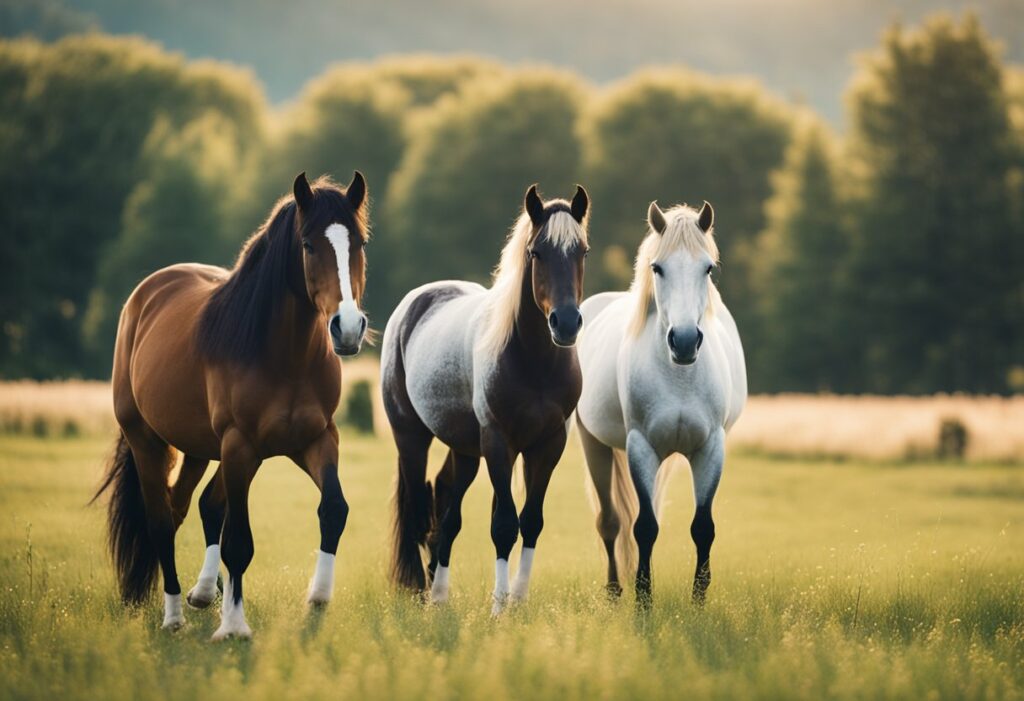
Mammals and Milk Production
Commonalities and Differences
Mammals, including animals such as sheep, goats, cattle, dogs, and cats, have evolved to produce milk to nourish their offspring. All mammals have mammary glands, which are modified sweat glands, and some even have multiple pairs of breasts or udders. These glands are organized along a structure known as the milk line, which extends from the front to the rear of the animal on both sides of the body.
While some mammals like cows and goats have udders as well-defined mammary structures to store and distribute milk, others, like dogs and cats, have multiple pairs of breasts. Horses fall somewhere in between; while they possess mammary glands, their structure is slightly different than that of species with udders and is more similar to that of a breast instead. Horse mares have two mammary glands, which are responsible for their milk production.
Ruminants, such as cattle, sheep, and goats, have specialized udders consisting of multiple compartments to store milk. In contrast, elephants, which are not ruminants but rather part of a group known as elephantine pachyderms, also have mammary glands that are located between their forelegs, similar to the positioning in primates.
Evolutionary View
The evolution of milk production in mammals can be traced back to the common ancestor of all mammals. The emergence of mammary glands is a result of selective forces that favor the ability to provide nourishment to offspring through milk. This allowed for increased survival and reproductive success in those early mammals, leading to the widespread presence of lactation in their descendants.
Camels, for example, have adapted their mammary system for desert survival. They have large udders and teats to store significant amounts of milk, allowing them to provide nourishment to their offspring even in the arid conditions of their habitat.
In contrast, bulls and steers, being male cattle, do not possess udders or mammary glands, as their role in reproduction does not require lactation.
In summary, while there are commonalities among mammals in terms of their ability to produce milk, the specific adaptations and structures for milk production, such as udders or breasts, can vary significantly among species. These differences and similarities arose through a long evolutionary history that shaped the diverse range of mammary systems in mammals today.
Frequently Asked Questions
Do horses produce milk?
Yes, horses do produce milk, specifically mares, the female horses. The milk they produce is nutrient-rich and is primarily meant for their foals to consume. The composition of mare’s milk is different from that of cow’s milk, with lower fat and higher lactose content, making it suitable for consumption by lactose-intolerant individuals as well as non-allergic individuals. It is also utilized in certain cultural practices for human consumption.
Pregnant mare udder development
As the pregnancy progresses in a mare, her udder will develop in size and shape to accommodate the milk production process. The udder development usually begins around the last trimester of the pregnancy and continues until the mare gives birth. Once the foal is born and starts nursing, the mare’s body will produce more milk to meet the demands and support the healthy growth of the foal. Udder development is an important indicator of the mare’s readiness for nursing the foal.
Horse udder cleaning
Udder cleaning is an important aspect of horse care and hygiene, as it helps maintain the health of both mare and foal. Cleaning the udder area ensures the prevention of infections and comfortable nursing for the foal. Horse owners or caregivers should clean the underbelly area around the udder, using a gentle approach, soft cloth, and water. Avoid using any harsh soaps or chemicals as this may irritate or harm the sensitive skin of the mare.
Where are horse nipples?
The nipples on a horse are located on the udder, which is the milk-producing gland situated in the lower abdomen of female equines. Mares typically have two elongated nipples, positioned close together, that provide milk to the nursing foal. These nipples can be seen protruding down slightly from the udder when the mare is lactating.
Where does horse milk come from?
Horse milk, also known as mare’s milk, comes from the udder of a pregnant or nursing mare. The udder is responsible for producing and storing milk, which is released through the nipples when the foal suckles. This provides the foal with essential nutrients and antibodies to grow and develop properly. In some cultures, mare’s milk is consumed by humans as well and is considered to hold certain health benefits.
Can you milk a horse?
While milking a horse is not a common practice, it is possible to do so. Remember that the mare’s primary responsibility is to provide milk for her foal. If a horse owner decides to milk a mare, they should ensure that the milking process does not interfere with the foal’s feeding and that the mare is kept stress-free at all times. Horse milking is relatively rare but has been used in certain situations, such as the production of mare’s milk in traditional cultures or for special feeding needs of foals or other animals.
Last Updated on October 29, 2023 by Nate Dewsbury
